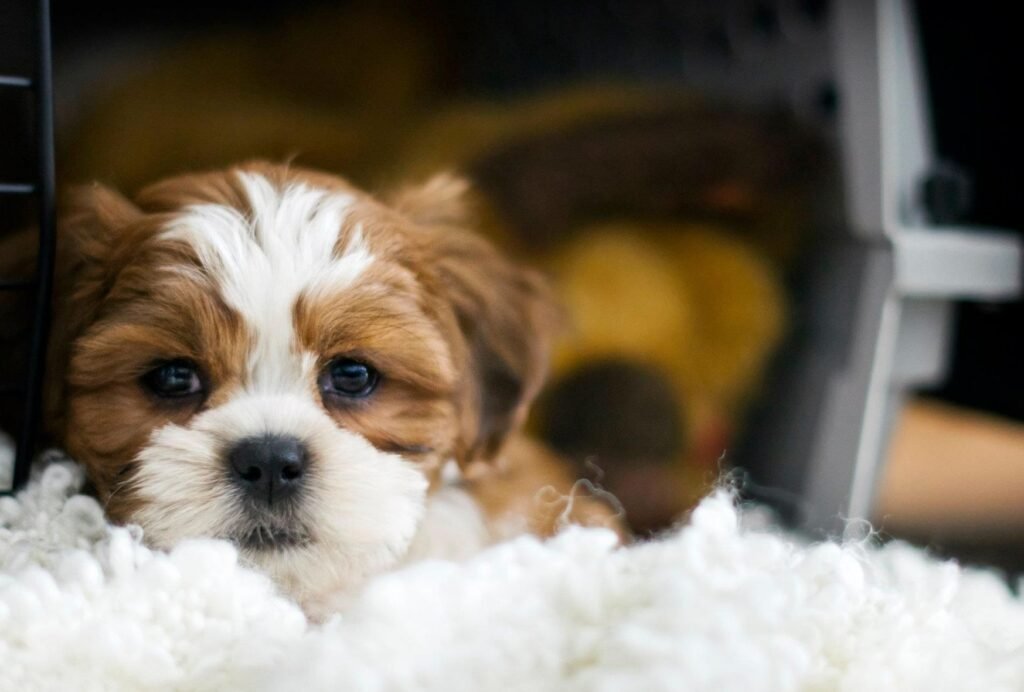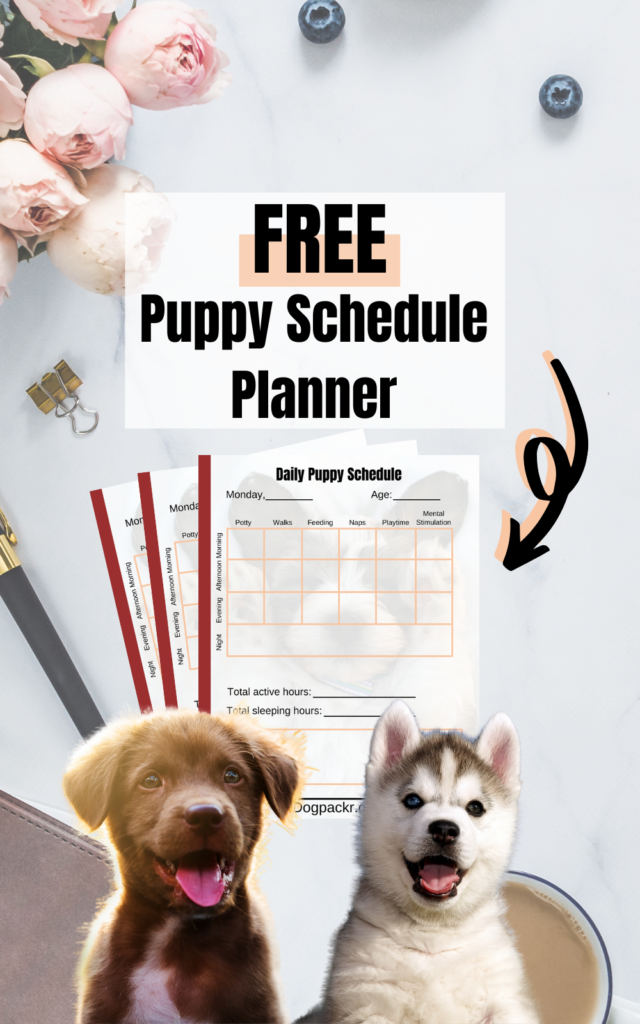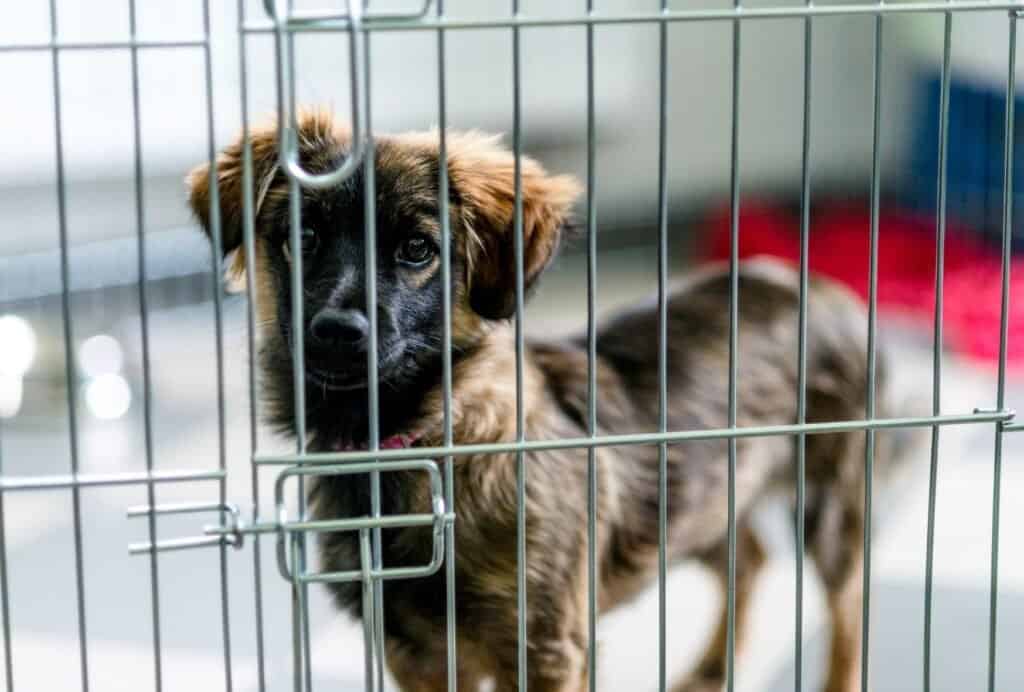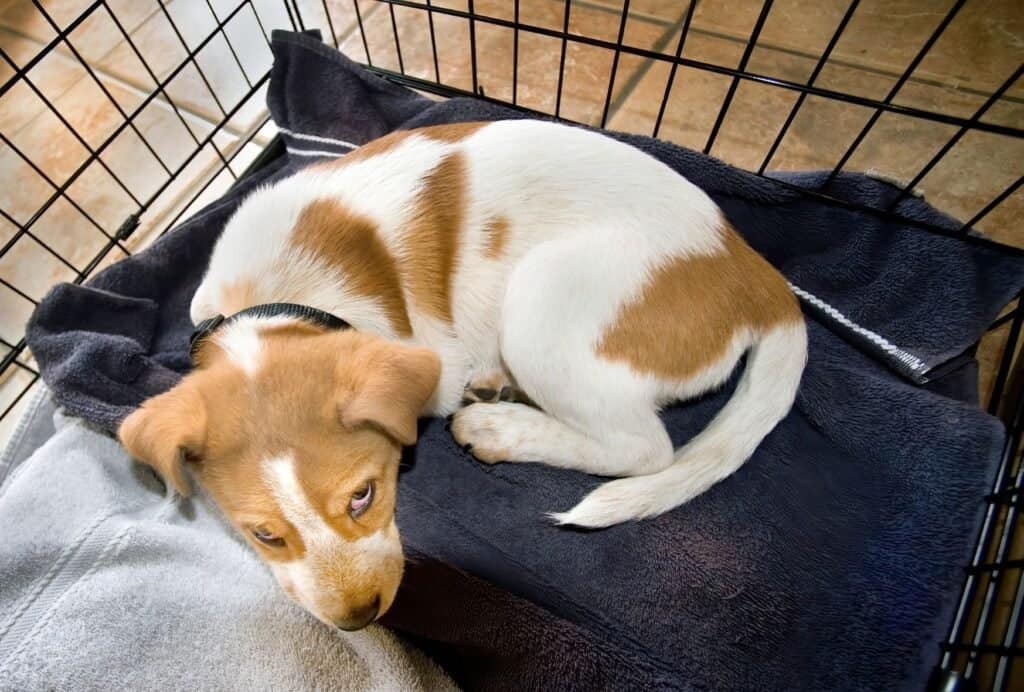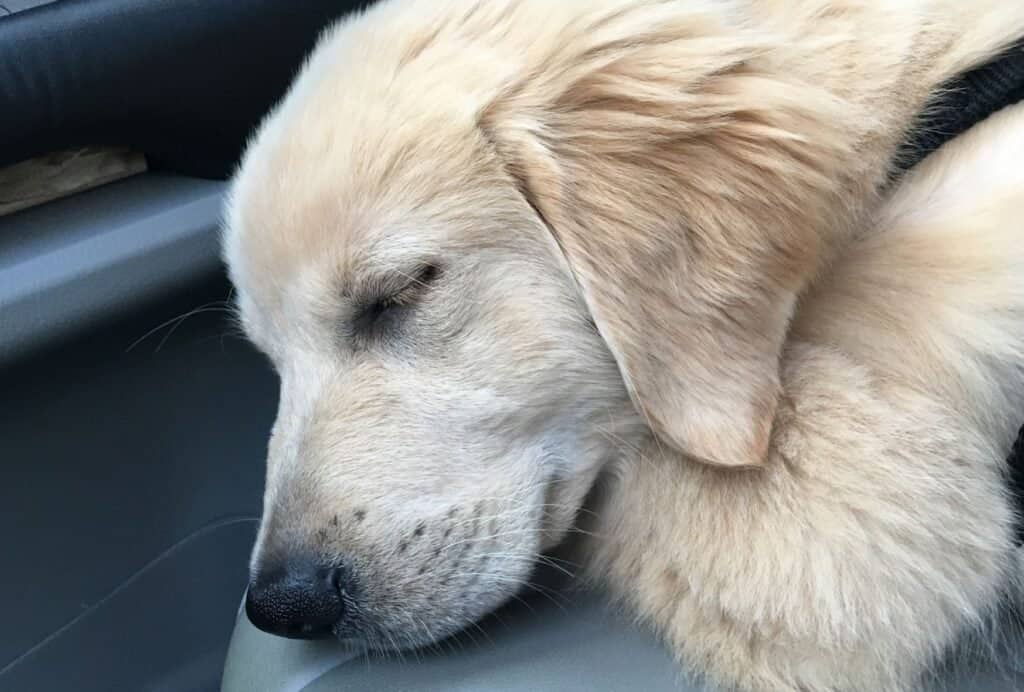If you’ve just gotten your new puppy, then congratulations! Raising a new puppy is an incredible experience, and you’re building a bond that’s going to last a lifetime.
But along with your new puppy come plenty of questions. Bedtime, for instance, can be a source of worry and confusion. After all, what are you supposed to do with your puppy while you’re sleeping? And can a puppy sleep through the night?
If you’re looking for peace of mind and a great way to show your puppy his new routine, then crate training is your best bet.
Crate training your puppy properly shows him that there’s a good, safe place he can go to rest, or if he just needs to wind down for a few minutes. The important thing is to always keep your puppy’s crate a safe, happy space for him.
And to do that, you need to go about crate training the right away. So, in this article we’ll look at how to crate train a puppy at night.
Table of Contents
Should I Crate My Puppy at Night?
The first question you might have is whether you should crate train your puppy at night at all.
Whether or not you want to crate train your puppy comes down to personal preferences. However, there are tons of benefits to it, such as potty training and establishing a good routine.
And a crate is especially helpful at night because it allows both you and your puppy to get the sleep both of you need.
But that’s only true if you do it the right way.
So, let’s look at how to properly crate train a puppy at night.
Before we get started, take a look at these related articles:
- What’s a Good Crate Training Schedule for a Puppy?
- My Dog Hates His Crate—What Can I Do?
- 11 Tips to Stop a Puppy from Peeing in the Crate
- My Puppy Is Throwing a Tantrum in the Crate—Help!
How to Crate Train a Puppy at Night
If you’re just getting started on your crate training journey, then learning how to crate train a dog easily in 13 steps is a great jumping off point.
But if you’re ready to learn how to crate train a puppy at night, then let’s get into the specifics.
Get the Right Crate
The first step to crate training is to make sure that your puppy’s crate is appropriate for him. The crate needs to be the right size to ensure it works effectively with your dog’s den instinct.
If you get a crate that’s too big, your puppy may feel more comfortable peeing or defecating inside of it. But if it’s too small your puppy will feel cramped and uncomfortable.
The general rule is that your dog should have enough room to comfortably stand up fully and turn around completely. It doesn’t need to be much bigger than that.
Make sure to check out the 6 best crates for dogs to sleep in if you haven’t bought your puppy’s crate yet.
Let Your Puppy Inspect the Crate
Your puppy is about to spend a whole lot of time in his crate! It’s important to let him get accustomed to it before you start shutting him in for the night.
Once you set the crate up, your puppy will probably be naturally curious. He might sniff around it, and may even go inside to check it out.
Let your puppy do this before you start closing the door with him in it. And, even if he’s just sniffing around the outside of it, give him a treat. This helps your puppy build up positive associations with the crate right off the bat.
The sooner your puppy learns that his crate is a positive space, the faster crate training will go.
Put Your Puppy’s Bed and an Old Shirt of Yours Inside
The next thing you want to do is make sure that your puppy’s crate is super comfortable. If he already has a bed that he’s familiar with, putting it in the crate will help him get used to it faster.
You can also toss in some super cozy blankets to help make the crate even more comfy.
It’s natural for your puppy to be nervous or apprehensive about his crate at first. You can help him warm up to it faster by putting one of your old shirts inside of it with his bed.
Dogs have an incredibly strong sense of smell. Putting a shirt that has your scent on it in his crate engages his strong sense of smell to help comfort him.
Establish a Bedtime Routine
One of the best things you can do for your puppy in general is to set up a routine.
Dogs do best when they have a routine. Routines help your dog understand what’s going on, and when to expect what. This will ease a lot of anxiety.
That’s exactly why you should set up a bedtime routine for your puppy. It takes the guesswork out of your puppy’s life, and will help him relax much faster.
As your establishing your bedtime routine, remember to try new things and find what works best for you and your puppy. And once you find what works, stick with it!
Make sure to download my free puppy schedule planner to get started.
Give Him Something to Chew or Lick
Dogs are mouth-based creatures. Puppies especially explore the world through the mouths. If your little guy is feeling anxious in the crate when it’s bedtime, then giving him something to chew or lick could help.
This is because when your dog chews or licks something, his brain secretes a hormone called serotonin. This hormone is made by human brains as well.
In both dogs and people, serotonin helps balance out your mood and increase feelings of well-being.
So, giving your puppy something to chew or lick while he’s in his crate will help ease his anxiety. As a bonus, getting a tasty treat in the crate will also increase his positive associations with it.
Set An Alarm for Potty Breaks
How much does an 8-week old puppy sleep?
Can a 10-week old puppy sleep through the night?
Both of these questions have a lot to do with your puppy’s bladder. Your puppy is still very small, and may not be able to hold his bladder for very long.
The general rule of thumb is that your puppy can hold his bladder for a number of hours equal to his age in months plus one.
To make sure that your puppy doesn’t soil his crate, you should set alarms during the night to make sure that he gets the chance to relieve himself. When you bring him out, make sure to stay very calm. Don’t acknowledge him much to avoid riling him up, and bring him right back to his crate as soon as he’s done his business.
Only Take Him Out When He’s Quiet
A huge part of crate training involves positive reinforcement dog training. That means ignoring behavior you don’t want to continue, and rewarding behavior you do.
While in most cases your puppy’s reward will be a treat, in this case your puppy’s reward is going to be getting out of his crate.
But since you don’t want to reinforce whining or barking, you need to wait until your puppy is completely quiet before you let him out.
This will teach your puppy that the best way to get out of his crate is to be calm and patient.
It can be frustrating, but with time and patience you’ll be able to teach your dog to be quiet in his crate.
And if your puppy doesn’t seem to be progressing at all, then it may be time to take a step back and start again from an earlier stage! Remember to go at your puppy’s own pace.
Optional: Cover the Crate
Some dogs have a lot of trouble settling down at night.
Puppies especially may be too excited about checking things out and exploring to get the sleep they need.
A particularly bright room can affect your puppy’s ability to go to sleep too.
If there’s too much going on for your puppy to fall asleep, then covering his crate might help. If you have a hard plastic crate, then you may not need to cover it. But if you have a wire crate, then using a light blanket or sheet will help make the crate darker.
By darkening your puppy’s sleeping space, you’ll help his den instinct kick in even more. This will help your puppy feel less distracted by what’s going on outside the crate, get him to fall asleep faster.
Optional: Set Up Some White Noise
One of the reasons why your dog may be struggling to fall asleep is because he has super sensitive hearing.
Your dog can hear things that you don’t even know exist!
Of course, this can be super distracting if he’s trying to fall asleep. But you can help drown that noise out by playing something a little more relaxing for him.
White noise or calming music provides your puppy (and you!) with relaxing sounds to help fall asleep.
There are plenty of videos and playlists online that you can set up to play while you and your puppy are sleeping. A quick YouTube search will pull up endless results!
If your puppy is having trouble in his crate because he’s hearing things that aren’t letting him relax, then this might be the solution.
How Long Does It Take to Crate Train a Puppy at Night?
No matter where you are in your crate training journey, you might be wondering when you’ll finally get to stop the training process.
If only there was a magical number, and you could mark on your calendar the exact date when you’ll get to stop!
Unfortunately, all puppies are different which means there is no magical number. Some puppies take to their crate right away and only require a couple of nights to get used to it.
Other puppies require much longer.
Just remember to pay attention to your puppy’s behavior and go at his own pace. Rushing your puppy will only make the process more stressful and less successful.
How to Get a Puppy to Stop Whining and Barking at Night
If your puppy is barking or crying excessively while he’s in the crate, that can be really challenging for both of you.
The most important thing you need to do is make sure you’re crate training him properly. Spend a little more time working on crate training during the day to ensure that he goes to bed in his crate more easily.
For more advice, you can also check out these 7 tips to stop your dog from whining in the crate.
Can You Leave an 8-Week Old Puppy in a Crate All Night?
Most 8-week old puppies will not be able to sleep all the way through the night. Some puppies can sleep through the night in their crates pretty early on. But should they?
The main thing to be concerned about is your puppy’s bladder. It’s important to make sure that he’s getting the chance to relieve himself so he doesn’t soil his crate or get sick.
It’s in your puppy’s best interest to set an alarm to make sure that you get up to take him outside. You may need to do this once or twice a night until your puppy is a little older.
What’s a Good Puppy Crate Training Schedule?
The best way to go about crate training is my implementing a schedule or a routine. But how do you know if you have a good one?
Well, the short answer is that the best crate training schedule is the one that works for you and your puppy!
Your schedule may look a little different from someone else’s schedule. But there are some basics that you should make sure you’re making time for. This includes naptime, playing and training, and potty time.
If you need a little guidance as you build your new routine, check out this article: What’s a Good Crate Training Schedule for a Puppy?
Conclusion
Crate training your puppy is really useful for both of you. It will ensure that both of you are getting the sleep you need, and that your puppy is in a safe area during the night.
But crate training can require a lot of work! Some puppies take to it easily, and others… not so much.
No matter where your puppy falls on that scale, just remember to be patient with him—and with yourself! Keep up with training, stay consistent, and you’ll find yourself with a perfectly crate-trained puppy.
*Disclosure: This post may contain affiliate links, meaning, I get a commission if you decide to make a purchase through one of my links, at no cost to you.

